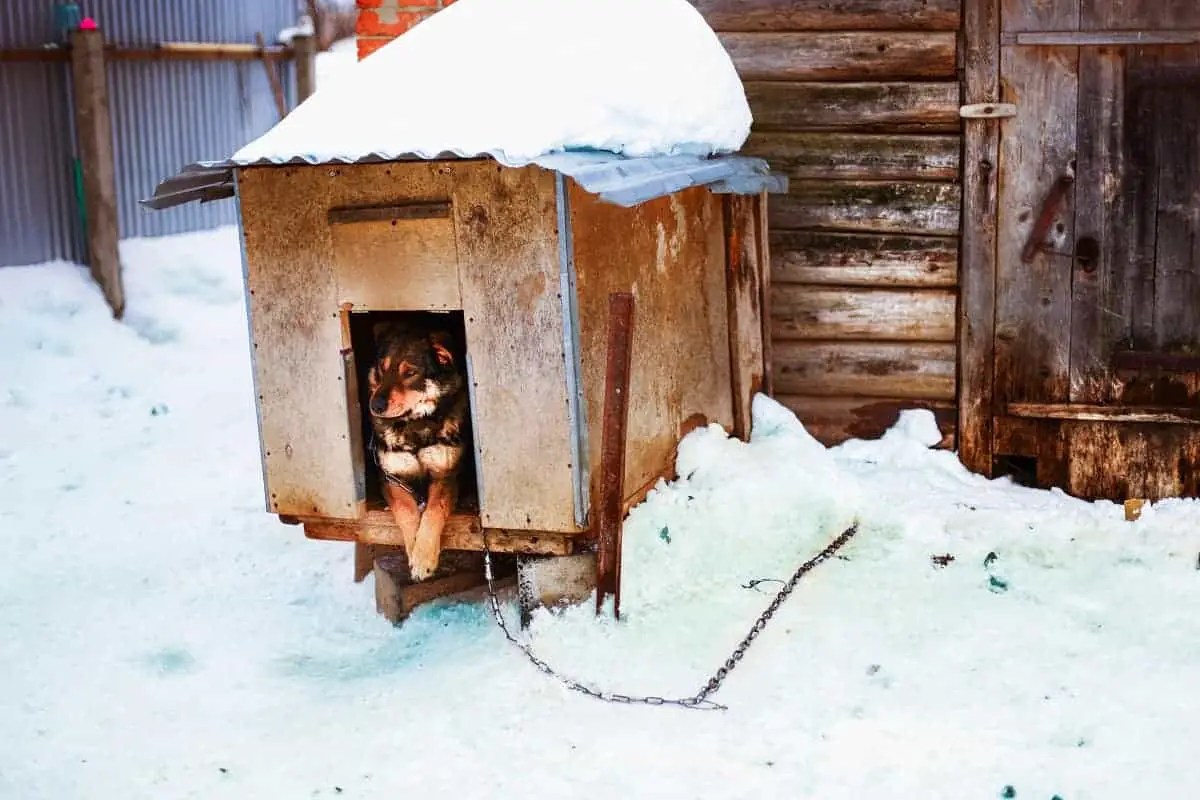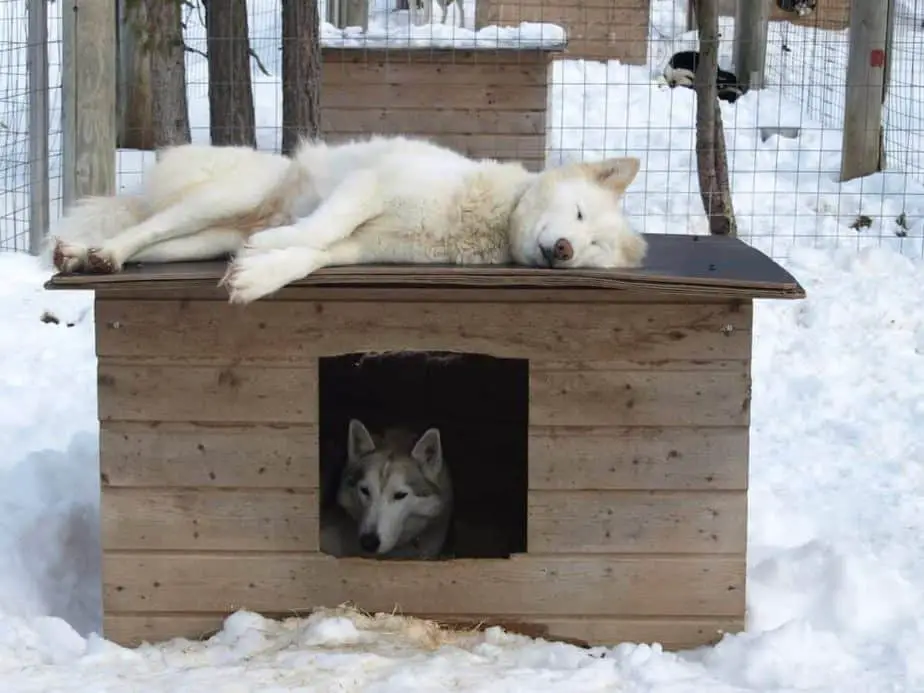Pawscessories is reader-supported. When you buy via links on our site, we may earn an affiliate commission at no cost to you.
Learn more.
It’s a cold, wet, stormy night. You’re snuggled up inside with the heating on max. But your best friend, Fido, is outside. Are you wondering how comfortable and safe he really is? It’s a valid concern.
Nighttime temperatures can plummet to below freezing in winter. With your dog staying outside you’ve probably asked yourself how to keep a dog house warm in the winter.
Dogs do have some adaptations to cope with the cold. They can trap and warm air by raising the hair on their backs, and their paws have an extensive network of blood vessels. But only a few specialized breeds thrive in extreme cold.
The average dog will just huddle up and endure. But experts say exposure like this can impact lifespan and adversely affect your dog’s general health.
If Fido is elderly or has underlying conditions, it could prove fatal. Luckily, a few simple changes to his kennel will make all the difference. So here we will take a look at how to keep a dog house warm in the winter.
Let’s get into it!
Table of Contents

How to Keep a Dog House Warm in the Winter: 8 Tips
Location, Location, Location
Like any real estate, the location of Fido’s kennel is vital. Position it to share a wall with the house, as the heat will flow through from inside.
Make sure it’s on the side best sheltered from the rain, and preferably under the eaves for cover. A spot that gets sun during the day is ideal.
Kennels will retain heat incredibly well if painted a dark color, but keep in mind this might make it uncomfortable in the summer.
Fix Any Holes
Identify any gaps and holes in the kennel. Over time, wood warps, rodent holes, and insect burrows will compromise weatherproofing.
If there are places that wind can get in they should be filled using non-toxic materials. If Fido’s a chewer, use a deterrent spray; most pet stores stock a variety.
And in case it wears off, be sure and not leave anything that could hurt him.
Insulation
Insulating a kennel will keep it warm in winter and cool in summer. Materials such as fiberglass, foil-backed foam board, or loose-full insulation can be great options for insulation.
The walls, floor, and roof of the kennel should all be insulated and must be between walls where Fido can’t get to it. If necessary, install “false” walls to cover it.
For a less permanent solution, staple carpet to the walls, floor, and roof. These can help as temporary solutions if you live in an area where the temperature changes greatly from season to season.

Weatherproofing
Place a synthetic, waterproof covering over the kennel to protect it from wind and moisture and retain heat. Attach it with staples or sealing tape, which will make it easier to remove and store away for the summer.
Look for plastic sheeting or “house wrap” at your local hardware store. An old tent or tarpaulin will work too.
Raise the Floor
Lift the kennel floor off the ground, as this will stop moisture and cold from entering from below. A packing pallet is an ideal makeshift solution if you’re not handy. Second-hand ones are often offered for sale at reasonable prices.
Bedding and Clothing
Fill the kennel with blankets or other bedding, as this will allow Fido to burrow in when he’s cold or push them to the side when he’s not. This is probably better than putting him in pajamas.
Not many dogs tolerate clothing for long, and a clothed dog can lose the ability to self-regulate its temperature.
Install a door
Most kennels come without a door, and Fido may need to be taught to use one. PVC, rubber matting, or carpeting can be stapled over the entrance.
This must be done so that it can be pushed from both sides and still spring shut again. Cut it in strips like the strip curtains used for cold rooms.
Or, create a burrow-like tube entrance in front of the door. Take an empty oil drum or large paint can and open it at both ends.
Attach it to the entrance to stop the weather from entering. Make sure Fido can enter and exit comfortably – you don’t want him to feel trapped.
Heating
The simplest heating option is to simply install a dog house heater. But if you feel like a challenge, you can try plumbing hot water through the kennel in pipes.
This will need to be done by a plumber, and care must be taken to ensure there is no chance of scalding. Or you can use a fan to push in hot air from the house via an aircon duct.
Microwaveable heating pads are less adventurous and more budget-conscious. They can be placed in the kennel to provide initial heat. A rice-filled sock does the same thing, as long as it’s not seen as a tasty midnight snack!
Final Thoughts
Our doggo companions are such loyal, loving creatures. They’ll greet us with wagging tails and adoring eyes, even if they’ve spent the night cold and miserable.
As considerate and responsible pet owners, let’s keep them warm and do all we can to make their lives as comfortable as possible.
Other Posts You May Find Interesting:
Best Dog Houses for Winter to Keep Your Dog Warm
What to Put in a Dog House for Bedding?
Complete (Honest) Petmate Igloo Dog House Review + Pros & Cons
